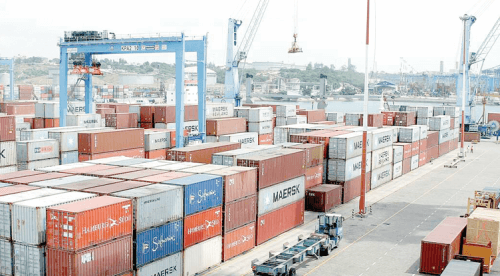
Our Projects are
Transforming African Trade
Quick Contacts
2nd Floor, Fidelity Insurance Centre Waiyaki Way, Westlands

Competition for port business has gone a notch higher in the East African coastal strip as cost and efficiency now threaten to snatch the pie from Kenya.
This as Tanzania signed a multi-billion, long term modernisation project of the Port of Dar es Salaam with Dubai-based ports operator DP World to improve the port’s competitiveness.
According to Dar es Salaam, the intention is to get a bigger share of the lucrative regional marine trade, currently controlled by the Port of Mombasa.
On October 22 2030, Dar es Salaam inked a $250 million (Sh37.6 billion) 30 year concession agreement with DP World, for the later to operate and modernise the multi-purpose Dar es Salaam port, the largest in the country to improve its efficiency, competitiveness and trade opportunities for Tanzania and the region.
While the port of Mombasa has been on top gear, due to its fairly modern facilities, earning it the moniker of the ‘Gateway to East Africa”, this position is gradually attracting the likes of Dar es Salaam, Djibouti and Somalia’s Berbera ports, according to the latest ranking by the World Bank’s Container Port Performance Index (CPPI) released in June this year.
The CPPI rankings say that the Port of Dar es Salaam leapfrog Mombasa, which recorded a dramatic drop from position 296 in 2021 to 326 in 2022, below the port of Dar es Salaam which improved its CPPI rankings from 361 to 312 out of 348 in the review period.
Though a long term project, Kenya should be worried modernised Dar es Salaam Port because it spur competition in the region, affecting Kenya’s trade and economic activities, especially if not matched by Kenya.
Kenya National Bureau of Statistics (KNBS) data shows that volume of cargo handled declined for the first time in five years in 2022.
Latest data from KNBS indicates that the port’s throughput declined by 12.4 per cent to 2,869.3 thousand tonnes in June 2023 from 3,277.1 thousand tonnes the previous month.
Imports into Kenya and the hinterland also declined by 12.2 per cent to 2,287.4 thousand tonnes in June 2023, though export goods through the port rose by 1.9 per cent to 464.6 thousand tonnes in June 2023 from 456 thousand tonnes in May 2023.
DP World is famed for successfully turning around the fortunes of the Ports of Djibouti, Callao in Peru, Sokhna in Egyptand and Nhava Sheva in India through their global expertise and innovative approaches.
The Tanzania project will see the Port of Dar es Salaam dredged to increase the width and depth of the ship entrance, allowing larger vessels access the port. This is expected to attract more shipping lines and bigger ships into Dar es Salaam and ultimately lead to lower ocean freight costs for Tanzanian importers and exporters.
Regional traders currently prefer Mombasa over Dar es Salaam because of the difference in cost, where it is cheaper to transport a container, since the price of a container from Mombasa to Kampala is estimated to cost of $2,700 (Sh6 million) when compared to Dar es Salaam’s $4,800 (Sh10.6 million).
In addition, the Port of Mombasa has relatively more developed infrastructure and efficiency over Dar es Salaam, in addition to providing better connectivity to the region’s landlocked countries, factors that have contributed to faster cargo handling and smoother logistics operations a process that lowers demurrage charges for shiip merchants.
However, the on-boarding of DP World could change the dynamics as the port operator has also undertaken to make future investments in temperature-controlled storage facilities to enhance storage of perishable produce and improve rail-linked logistics for greater connections.
The investments which will be scaled to over $1 billion (Sh147 billion) during the concession period will also potentially include the future development of special economic zones together with the broader port’s logistics sector to increase Tanzania’s role and influence on the future of global trade.
Read original article
Disclaimer: The views and opinions expressed in this article are those of the authors and do not necessarily reflect the official policy or position of TradeMark Africa.